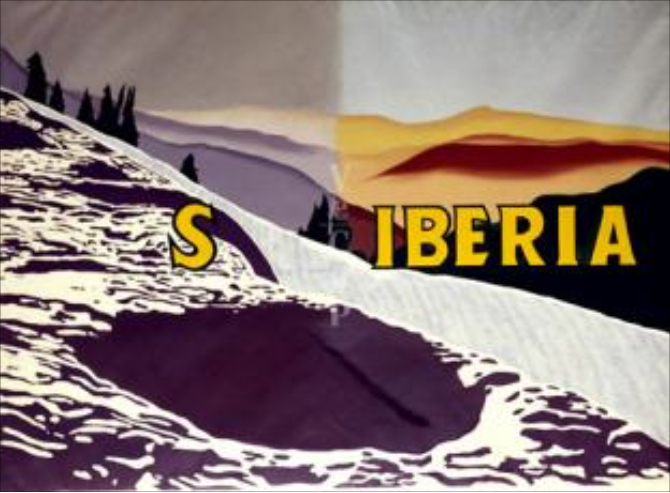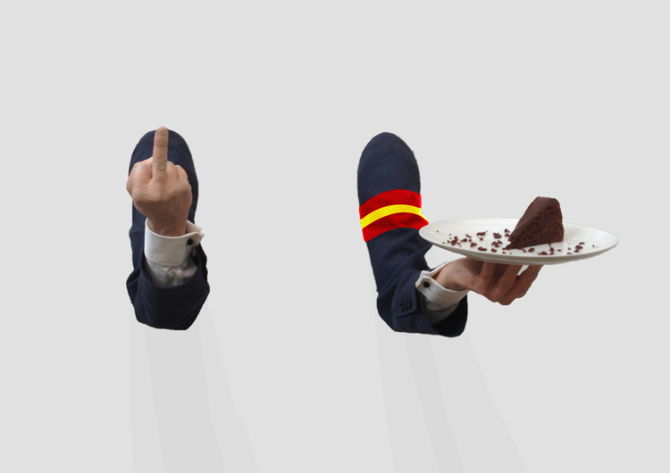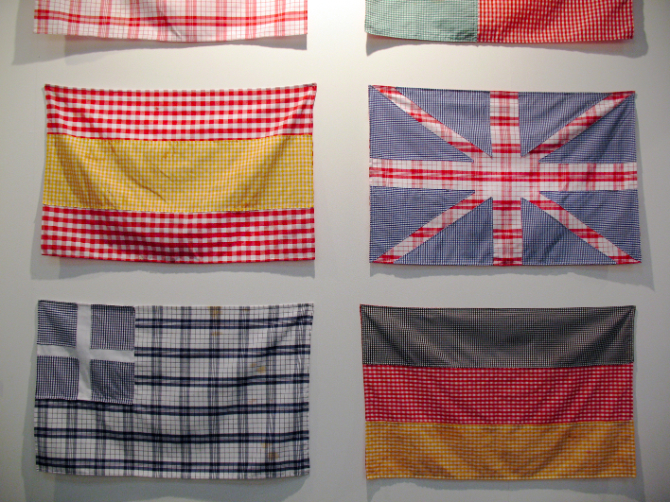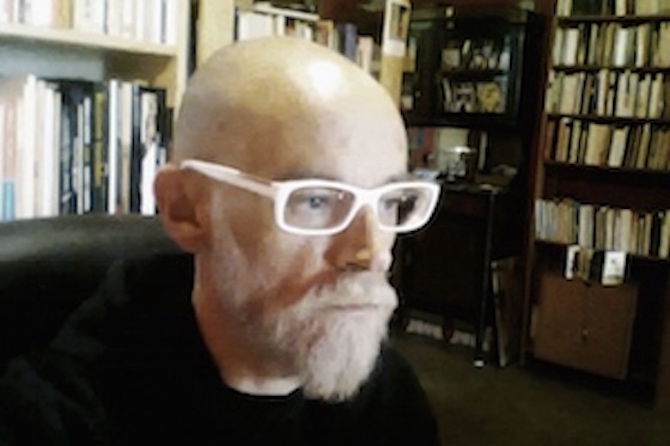Search
To search for an exact match, type the word or phrase you want in quotation marks.
A*DESK has been offering since 2002 contents about criticism and contemporary art. A*DESK has become consolidated thanks to all those who have believed in the project, all those who have followed us, debating, participating and collaborating. Many people have collaborated with A*DESK, and continue to do so. Their efforts, knowledge and belief in the project are what make it grow internationally. At A*DESK we have also generated work for over one hundred professionals in culture, from small collaborations with reviews and classes, to more prolonged and intense collaborations.
At A*DESK we believe in the need for free and universal access to culture and knowledge. We want to carry on being independent, remaining open to more ideas and opinions. If you believe in A*DESK, we need your backing to be able to continue. You can now participate in the project by supporting it. You can choose how much you want to contribute to the project.
You can decide how much you want to bring to the project.

I don’t like it that you put micro-statistics with the bulls. The pollster, this hunter-gatherer of statistics, poses questions that might be relevant (“do you feel more Catalan or Spanish?”), combining them with others that can be tricky (“which of the two languages that you speak do you feel is more your own?), and adding, when the mixture has reached a boiling point, a question that only a left-handed, socio-linguist, who is a lover of 70’s psychedelia would ask: “from zero to ten, how Spanish do you feel?”. In this way public opinion with regard to national adscription is produced through the very act of questioning, being strategically modified with each new battery of questions. The “national question” existed prior to the survey; but neither its relevance, nor its nuances did. The questions, renewed, suit the situation of the moment, constructing the Fatherland while at the same time introducing a sophistication of the patriotic debate.
In the micro-statistical production of national sentiment the symbols of the country lose substance: the citizen is invited to paint the flag, or bleach it, and to add the tones that correspond to the imaginary banner related to the country. This approach has, a priori, all the very traits of a labile relation with signs. It’s not essentialist (it doesn’t deal with the Pennant, so much as with the tone), it is pseudo-scientific (inventing technical knowledge) and above all is sensological: substituting national awareness for rationalised sentiment and affirming the value of current sensibilities about the trans-historic convictions. It seems, therefore, to be just yet one more minor or weak approximation to the Great Meta-narratives. However, as the installation shows us, its instituting levity is perchance stronger than the marmoreal certainties of the equestrian sculpture and triumphal arch. As these inks are as strong as those that Plato evoked when he indicated that the confidence in the legislation ought to be printed, inscribed, in the life of the citizens, just as clothes are impregnated with dyes.
From the flag zero to ten: the Gamma Peinado could be used as an index to identify different positions in this debate, the more polarised or binary, the more nuances, deceits, bleaches and persils it incorporates. Without going any further, only yesterday an article was published by a moderate member of the critical sector of the PSC, that, if I understood it correctly, would be situated at some point between the fifth and fourth flag –though there would be those who would object that to map the political positions, and their nuances, one would need another hundred or so flags, along with the decision to hoist high the flag of the right when the hour of truth comes. The micro-statistical approach to the national question can be described as a manipulation, as an instrument at the service of base electoral instincts, but it can also be contemplated as an experience of nationality in which the modern question (“are you a patriot?”) has been substituted for the globalised one (“how much of a patriot are you?”).

Flag 6, or the art of despondency. Considering the national factor as a tone, an ingredient or an element can be a useful way of describing the position of artists and civilians in relation to the demands of nationality. It’s clear that this perspective is not devoid of risks. It could seem inopportune, a return to the coordinates of the national historiography, in which the idea of the essences has been substituted for an accident that, like everything accidental, ends up being revealed as something constituent and necessary for the construction of the system. But these reservations can be attenuated if one considers that the subject of the nation is not necessarily a central objective so much as a mediator, that is a possible motive, usually invoked not so much with the aim of “resolving the problem” in the mode of ’98 but as a particularly useful way of establishing an emotional code.
It’s not perhaps a minority of readers who consider that, amongst these eleven flags, theirs is the one in the middle. Neither white, nor red and yellow. Neither neutral, nor coloured. Something in between. An intermediate degree that is not actually dialectical, and one which, sadly, doesn’t resolve the opposing ends: so much as fits in the middle. In my belief the pennant in the middle is not much of a flag. It doesn’t invite one to wrap oneself in it and climb up a fountain; it is more the pennant of an improvised micro-nation on an oilrig. And yet, everything leads one to think that this bit of cloth has gained a central importance. Despondency can be a passive attitude, usually leading to abstention or a blank vote. But it can also be used as a banner. Despondency can be declared, proclaimed, formulated in an intentioned and symptomatic manner. It can appear as the most distinctive trait of a subject that wallows in disquiet, legitimating it with excuses of a historic nature or with critical discourses about nationality. From this point of view, the sixth flag appears to us like an icon of Cernuda, a lacklustre Spanishness practiced by numerous creators, principally with the great pictorial and literary tradition of exile, that imagines nationality from a remote position of disenchantment.
It would be reasonable to ask what the heritage of this tradition is, beyond the manuals, in an era when exile for political reasons has been substituted for studios in Berlin and the movements of itinerant artists. As certainly even though the biographical tale that serves as its foundation has lost its validity or has been substituted by others, vocational despondency still continues to be one of the clearest codes, identifiable and legitimated by the creator, in particular in the tradition linked to the left. Up to the point that the current processes of rupture, secession or, as is said from the other side “disaffection” or even “sedition”, can hardly be seen as an internal issue of autonomy: they seem more, from this point of view, like the external realisation, or putting into practice, of a systematised detachment that, in being so incorporated with the symbolic system of the arts, has ended up going unnoticed, as if it was just a trend or an expressive figure.

Flag 4, or interior immigration. In effect, the risks of this perspective end up being oblique when we check to see how it has been used, in a more or less implicit manner, to describe the interventions of foreign artists on Spanish soil. Peinado is an artist originally from Montpellier who, in a show presented in a Barcelona gallery, makes an inflection on the national imaginary, contextualised in a broader preoccupation with the symbols of the nation (he also used the procedure of the eleven flags with the North-American flag). This position would situate him at the fourth flag, that is, in the position of the globalised artist who, in a phase of his work, takes on as a “case study” the signs of a particular nationality. Haacke, in a journey from Barajas, asks the taxi driver what a series of half constructed blocks are and what the town they pertain to is called. Boltanski delves into the archive of El Caso, to organise a memorial-installation with photographs of crime victims. The Chapman brothers intervene on an edition of the Disasters. They are quite distinct cases, yes, but it is clear that they have a feature in common: underlying them all is the idea of the Great Calamity–be it financial, architectonic, bellic or even semiotic: the destruction of the nation through its signs- and a sense of the terrible–be it a historic catastrophe or baroque fatality, frequently invoked as a remote reference in representations of negativity in contemporary art. This cultural construct is not necessarily moderated by technical approaches in this case or by the supposed coolness of the conceptual perspective. Susan Best already indicated that the “cool” techniques and modes of conceptualism can provoke warmer responses, exemplifying it with Haacke’s works about urban planning and financial capital, which though in their first versions weren’t of sacrosanct indignation, in their more recent inflections appear as The Tragedy of the Urban Speculation. The distinction between the pictorial and the conceptual is left, to a large extent, tinged with this idea-strength that the artist can brandish as a bearer of the fourth flag. This has been another of the old illusions of the artist: to see the country with the taxonomic cruelty of the observant traveller –being able to wear a t-shirt with the Osborne bull, like the one worn by the main character in Elephant by Gus van Sant. Probably the most current realisation of this illusion has been the recent project Marca España, curated by José Jurado for the EEC in Berlin, where diverse proposals generally linked to activism have been exhibited. The project by Jurado closes the circle opened now more than ten years ago by the exhibition, that awful memory, “The Real Royal Trip”, with which at the start of the century Harald Szeemann proposed to give his version of universalizable national creation.

Flag 0, or globalised illusion. Is there a zero degree of nationality? Is it possible to wrap oneself in the white flag? If it were possible, what would this flag be like? Like the white kit that the representatives of the old Soviet Union wore in the Olympic Games in Barcelona, that is, like a neutral identity that converted them into representatives of Provisionality? Or more like a pennant that contains, with its colours and allegories, a vacuum? Slavoj Zizek read the image of a Rumanian flag with the shield cut out in this way, in the days after the revolution, as therefore representing the moment of indecision when the great political signifier has disappeared.
Many are the artists who, faced with this question about national adscription, pull out the white flag or cut out the shield. Amongst all of them, perhaps those who have achieved the most credibility are those who work with practices related to sound. Sound art, experimental music, distinct modes of electronic art; these seem to be the immaterial instruments that are most resistant to national codification, representing a global drift. In electronic art the national is presented, more than in the other versions, as a factor of the equation that can be elaborated or eliminated on the mixing table.
Ideally the gradual disappearance of the distinction between electronic and analogical music–the subsumption of all the sounds in the mixing table – would lead to a zero degree of the nation. An echo: towards the fourth minute of the track of space disco Sauerkraut, by the Norwegian producer Prins Thomas, the modulated sound of castanets punctuates the progression of the synthesisers. It’s a quote, an echo, an expedient of the producer, possibly (one imagines) proposed by El Guincho, with whom Prins Thomas had collaborated in the making an incendiary remix of Antillas. A “sign of Spanishness” appears, as if by magic, in an elaboration of universal aesthetic– krautrock transformed, from Oslo, into dance music.


PhD in Humanities from the University Pompeu Fabra, currently teaching Contemporary Art at the UPF Education Abroad Program, as well as on the Art module of the Master in Cultural Journalism, UPF Barcelona School of Management. He has published with Anagrama the essays Afterpop Homo Sampler, €®O$ (Anagrama Prize ) and Emociónese así (Barcelona Prize).
"A desk is a dangerous place from which to watch the world" (John Le Carré)